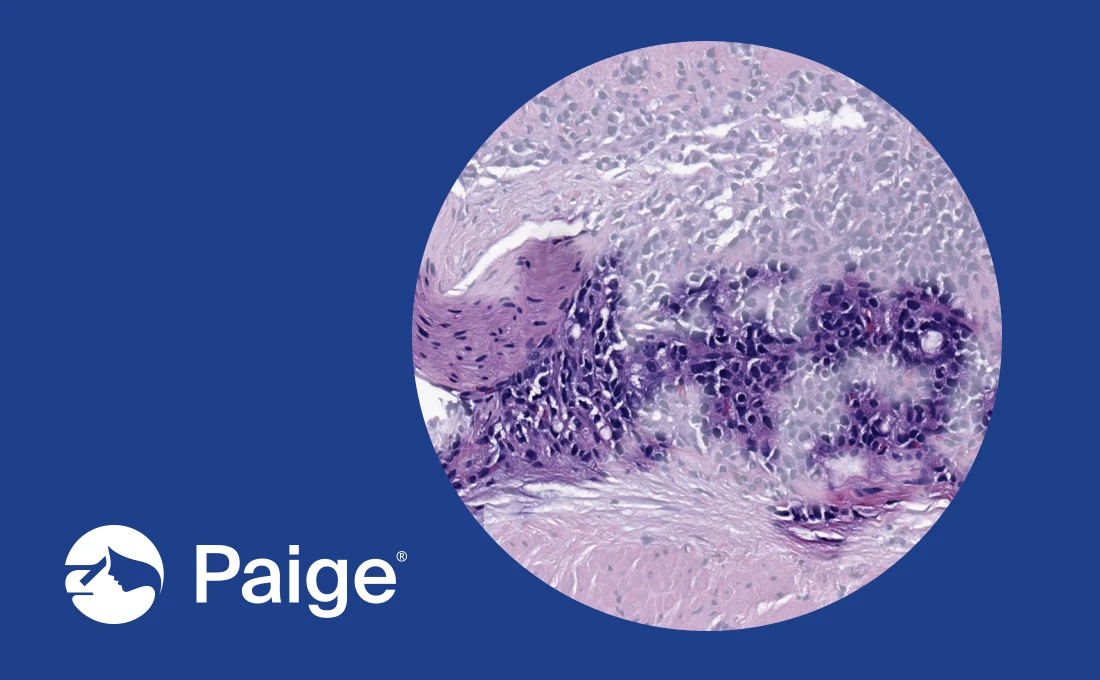How intelligently designed software helps pathologists help patients
In the digital age, user experience (UX) design plays a pivotal role in shaping our interactions with products. From e-commerce websites to mobile applications, UX design influences how users perceive and engage with technology. At Paige, a leading provider of web-based software used in the field of digital pathology, UX design holds a critical role. With a dedicated team of talented UX researchers and designers, Paige strives to create usable, relevant, and valuable products for its end-users, the pathologists.
We are able to do so by approaching design with a few guiding principles; innovation, user respect, curiosity, collaboration, and practical application.
Innovation: Driving Ambition
UX design at Paige is fueled by an unwavering ambition for innovation. Recognizing the immense potential for optimization and enhancement in the field of digital pathology, the team constantly seeks opportunities to challenge traditional processes. Rather than accepting the status quo, they iteratively explore novel ideas to develop the best possible product. This commitment to innovation enables Paige to push the boundaries of what is possible in pathology, and drive advancements that will shape the field.
User Respect: Guiding Expertise
Paige sees pathologists as true experts in their field. Therefore, our UX design process is driven by a deep respect for the knowledge and experience of pathologists. Our goal is to unlock their expertise through thoughtful and user-centric designs. The team recognizes that what may seem intuitive to them may not align with the needs and expectations of expert pathologists, so they are committed to continuously asking questions and learning about the end-user experience to ensure our products bolster pathologists’ skills.
Curiosity: A Window into Day-to-Day Utilization
To that end, Paige’s UX design team needs to approach their work with deep curiosity. They actively seek to understand what it’s like to be on the other end of the product, empathizing with pathologists and their challenges. By continuously learning from pathologists, the team gains valuable insights that guide the design process. This curiosity-driven approach ensures that the resulting products align with the needs and preferences of pathologists, promoting seamless adoption and daily usage.
Collaboration: Building With, Not For Pathologists
At Paige, collaboration lies at the heart of UX design. The team believes that building products for pathologists without their direct involvement would be incomplete and less effective. Therefore, they establish strong relationships with pathologists globally, leveraging their diverse perspectives and valuable feedback throughout the entire design lifecycle. From research and ideation to testing and ongoing feedback, pathologists actively contribute to the design process. This collaborative approach allows Paige to create solutions that suit the complexities of real-world pathology work and make a tangible impact on their daily workflows.
Practical Application: Realizing Pathologist-Centric Solutions
Great designs are only great if they are practical for real-world use. To ensure the effectiveness of their designs, Paige’s UX team avoids working in isolation. When pathologists propose ideas, the team collaborates with them to understand the underlying needs, pain points, goals, and preferences. They then carefully incorporate this feedback to arrive at the solution that will be the most valuable in a clinical setting. Even seemingly minor design details can significantly impact pathologists’ ability to complete accurate diagnoses. By prioritizing usability, Paige drives efficiency in the lab, leading to faster and more precise diagnoses.
Additionally, as digital pathology is a burgeoning field, the team aims to create features that will support the seamless transition to digital. Our user-friendly solutions will retain familiar features where we can, while leveraging the power of digital tools to enhance workflows. For example, when pathologists complete their read of a glass slide, they flip it over in the slide tray, and needed a way to mark slides as read in the digital environment as well. Paige introduced a simple read vs. unread indicator within our digital slide tray, which surpasses the utility of a flipped slide visualization. This design improvement accelerates the adoption of digital pathology and empowers pathologists to provide optimal care to patients.
Another notable example of collaboration between Paige and pathologists is the development of our TissueMap, a feature that visualizes the results of AI analysis by highlighting areas of cancer on whole-slide images. Unlike conventional approaches that use a heat map, pathologists voiced concerns that the multitude of colors in heat maps obscured the critical details needed for diagnosis. In response, Paige’s UX team designed a visualization where cancerous tissue remains opaque, while the surrounding non-cancerous tissue is lightened in color. This approach allows pathologists to more quickly focus on crucial areas without sacrificing relevant diagnostic information.
Practical, thoughtful, and user-centric design is important for all digital products, but especially in the medical field, where technologies directly impact day to day care. Paige’s dedication to innovation, user respect, curiosity, and collaboration allows us to create products that align with real-world clinical needs, so that we can support expert pathologists in unlocking their skills to deliver in their important diagnostic work efficiently and confidently. By challenging traditional processes and embracing novel ideas, Paige drives advancements in the field of digital pathology, creating a future where the possibilities are even greater. Through UX research and design, Paige contributes to the mission of pathologists worldwide, empowering them to provide the best possible cancer care.

